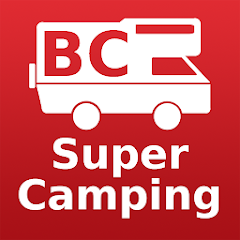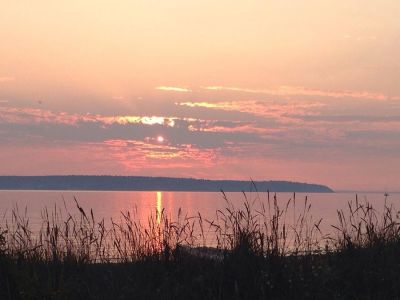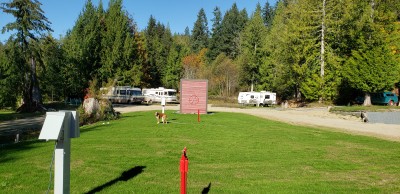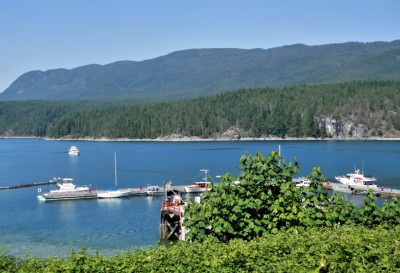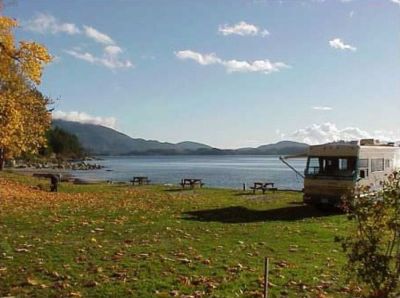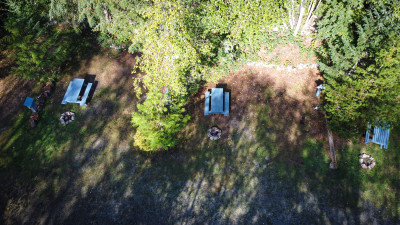Sunshine Coast Hiking Harmony Islands, Photo Destination BC Albert Normandin
Powell River
Powell River is located on the northern Sunshine Coast in the Vancouver, Coast & Mountains region. Its populous areas are near the eastern shores of the Salish Sea, which is part of the larger Georgia Strait between the Mainland and Vancouver Island. The geographical surroundings of the area are the reason why the community has remained somewhat remote, despite its proximity to Vancouver. The region is still heavily dominated by the lush, beautiful nature of the West Coast. The region houses several parks on magnificent waterfront locations, where you can see seals, sea lions, and killer whales. The area is a desirable destination for scuba divers, who come to see Canada’s first underwater statue; a 10 foot mermaid, known as the Emerald Princess, located 20 meters (60 feet) under the surface.
Designated a National Historic District in 1995, the Historic Townsite is one of only a few professionally planned, single-industry towns dating from the early modern period in Canadian town planning that has been preserved and restored by its residents. Walking tours are available to see the landmark buildings including the Patricia Theatre, Dwight Hall, Rodmay Hotel and Catalyst paper mill. Sliammon First Nations art is housed in the Powell River Museum located in town. The museum traces the region’s history and development. Artifacts include stone weapons, cooking utensils, and intricately woven baskets, in addition to the many artifacts from the 19th and 20th century. All of this adds to the community’s burgeoning art scene.
Location
Powell River is located 31 km (19 mi) north of the Saltery Bay ferry terminal on the upper Sunshine Coast. From Vancouver, take the Horseshoe Bay Ferry in West Vancouver to Langdale, drive to Earls Cove (80 km/50 mi) and board a second ferry to Saltery Bay.
A Step Back in Time
The Powell River region was once home to over 20,000 of the Coast Salish people of the Sliammon clan whose presence can be seen at various archaeological sites throughout the area. Powell River was named in the 1880s for Israel Wood Powell, who was the superintendent of Indian Affairs for British Columbia.
Logging was the major industry in the Powell River area and in 1912 the first pulp and paper mill was built on the waterfront by Brooks, Scanlon and O’Brien Company. By 1930 the company employed over 2,000 people and was the largest newsprint mill in the world. In its prime, one in every 25 newspapers around the world was printed on paper from the Powell River mill.
In 1939, when the British Columbia Credit Unions Act was passed, a study club, organised by local mill workers secured the first charter with a deposit of $48.30. The mill provided office space at a very low cost, and by 1955, the Powell River Credit Union (now First Credit Union) moved into a permanent office, with over 3,000 members and $1 million in assets.
The development of the highway, which reached Pender Harbour in the 1930s and the northwest end of the Sechelt Peninsula in the 1950s, brought the settlements closer together, and after car ferry service began in 1951, closer to Vancouver. After this date, the population increased rapidly. Powell River Townsite was designated as a National Historic District of Canada in 1995, one of only seven in Canada. A charming community remarkably intact with over 400 original buildings contained within the borders of the 1910 town plan. In 2004, Powell River was named the “Cultural Capital of Canada” in recognition of its strong arts and cultural programs.
Powell River and Nearby Accommodations
British Columbia Lodging and Campgrounds Association Members
List
Map
6 Listings
